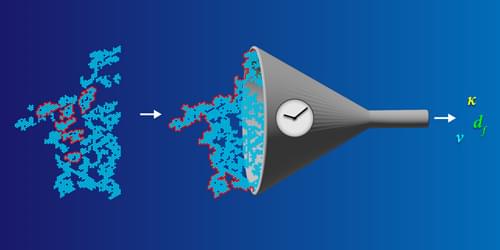New theoretical work explores the onset of rigidity in granular materials and other disordered systems by mapping out the edges of rigid regions.
Phase transitions are a common part of our daily lives. Many of them are intuitive: water transforms into steam or ice, birds spontaneously form a flock, and random piles of marbles suddenly jam together into a solid. Possibly the most basic phase transition, however, is a more abstract version called connectivity percolation (CP). In systems displaying CP, individual units such as persons or polymers are mapped by their contacts—or connectors—to a graph consisting of nodes and edges. As the number of connectors increases, the system switches from being disconnected (filled with small, separate clusters) to being connected (spanned by one large cluster). This connectivity phase transition is commonly seen in polymer solutions and pandemic spreading, but researchers have also used the percolation perspective to describe the onset of mechanical rigidity in disordered systems, otherwise known as rigidity percolation (RP).
